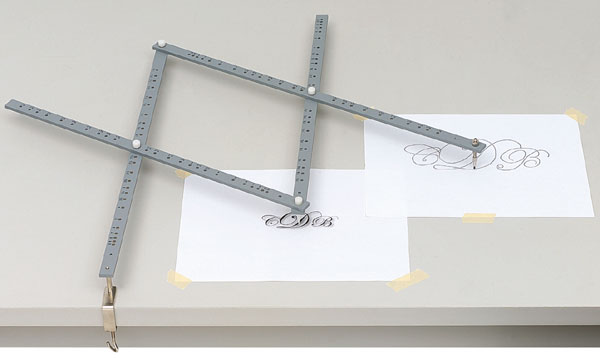Similarity
Transformations
Describe at least one similarity transformation that maps the blue preimage to the pink image. Include any transformational rules that are used in your process. (example: if you have a translation right three and up one and a half scale dilation, you would include (x+3, y+1) and (.5x, .5y) in your answer)
Describe at least one similarity transformation that maps the blue preimage to the pink image. Include any transformational rules that are used in your process. (example: if you have a translation right three and up one and a half scale dilation, you would include (x+3, y+1) and (.5x, .5y) in your answer)

In the picture given of a pantograph. The distance from the tracing element is one half the distance from the mounting point as the drawing element. This makes a dilation with a scale factor of two. What would happen if the tracing element was set up at a distance of 3 inches and the drawing element was set to 7 inches? Be as specific and precise as you can.